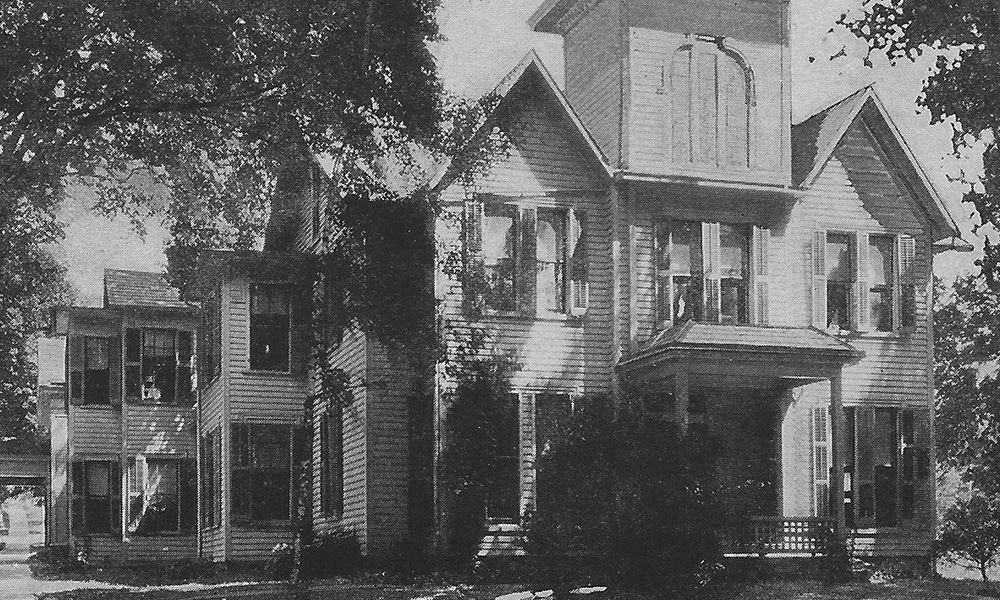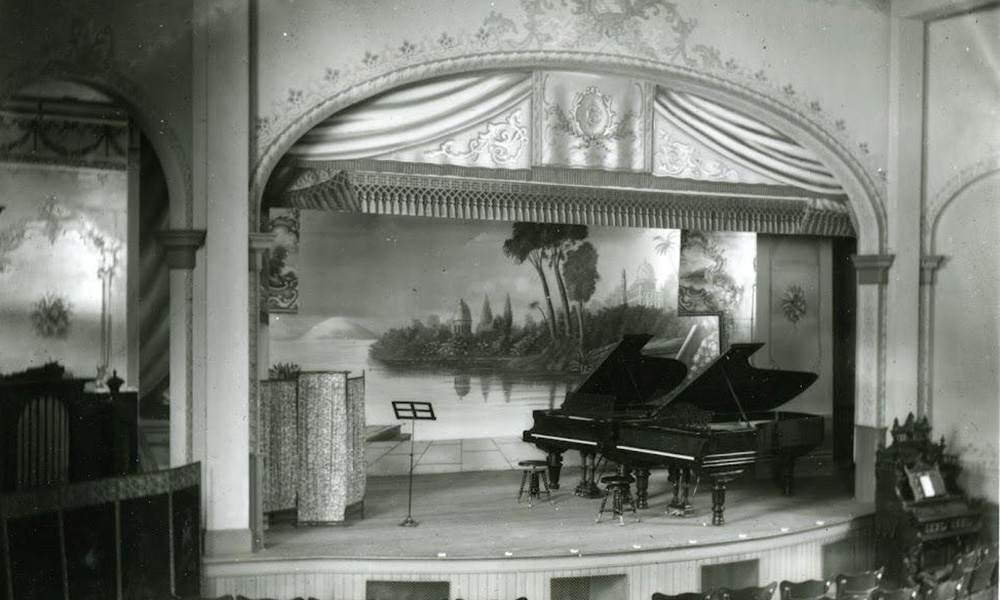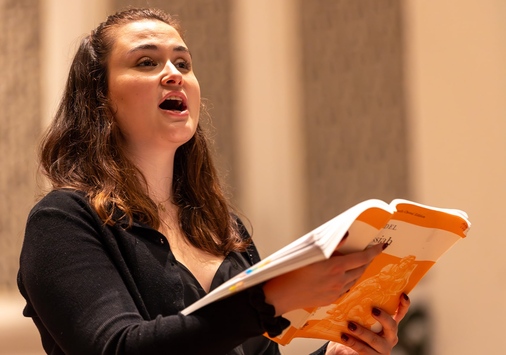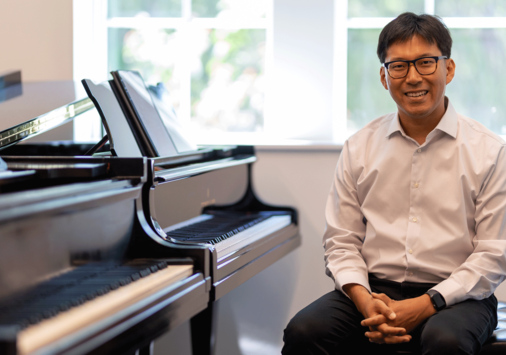Before there was Burke Hall, there was Recital Hall. The history of Denison’s Arts Quad can’t be told without looking at Thresher and Recital Halls, two once-connected buildings that stood between Burke Hall (now part of Eisner) and West Broadway, and served a similar function: as the centerpiece of Denison’s theater and music programs.
Thresher Hall traces its origins to the former Professor of Rhetoric Almon Thresher, who owned a large, funky-looking house with his wife Mary in the latter half of the 1800s. The Threshers left the house to the Shepardson College for Women, which was adjacent to Denison on what is now the Arts Quad. The women’s college, capitalizing on the house’s many rooms, used it as a music conservatory. When Denison absorbed Shepardson in the 1910s, the house continued in this vein and became known as Thresher Hall, or “The Conservatory.”
Thresher’s rooms were great as a conservatory, but the former home had no space large enough for performances with an audience. The solution was to add a performance space to the back of the building. This was accomplished in 1944 with the addition of Recital Hall, a white Greek Revival building with raked seating, capable of hosting operettas, concerts, plays, and music recitals.
Recital Hall became a sort of “cultural center” for the college, as Denison Magazine described it in 2018. Residents of Granville would congregate at the various performances taking place there. When Thresher was torn down in 1960 (in part for fire safety reasons, a common reason of the time for tearing down historic buildings), Recital Hall remained standing until Burke was built behind it, along College Street.
From the time when Shepardson College used Thresher as a music building with practice rooms and classrooms, these two buildings played a large part in affiliating Denison’s lower campus with the performing arts. The addition of Recital Hall solidified this status.
Today, Denison’s large recitals and performances are most often held at Swasey Chapel on the main campus, and Sharon Martin Hall in the Eisner Center. Fittingly, a section of the Eisner Center was built on the footprint of these buildings dedicated to the performing arts.









